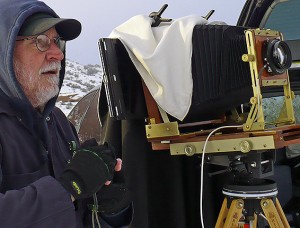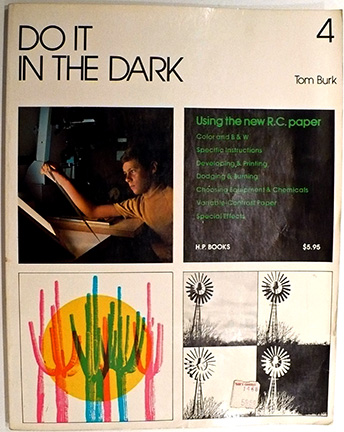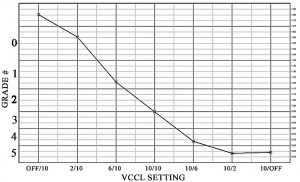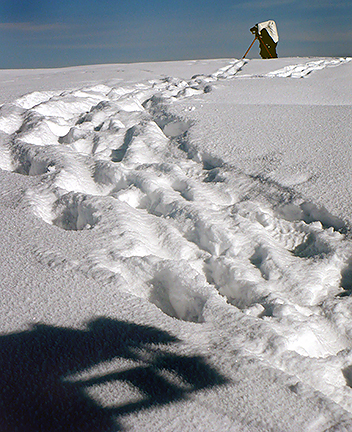 Do you cover the back of your view camera with the darkcloth before you pull the darkslide? I certainly do!
Do you cover the back of your view camera with the darkcloth before you pull the darkslide? I certainly do!
Have you ever experienced these pesky little light leaks along the edge of the film that seem to come from nowhere? Gremlins? Not really. They are caused by any number of things that can go wrong in LF. A holder that has a small leak only when the slide is out, one that does not fit tight in the camera back, a light trap that is worn, or maybe you stress the holder as you remove or replace the darkslide. Thing is, it always seems to show up on that one piece of film you really want to print. Light leaks were seldom a problem as long as we were shooting 4×5, but when we moved to larger film sizes it became more evident. I will say, without reservation, as the film size goes up, the problems multiply exponentially!
Not really. They are caused by any number of things that can go wrong in LF. A holder that has a small leak only when the slide is out, one that does not fit tight in the camera back, a light trap that is worn, or maybe you stress the holder as you remove or replace the darkslide. Thing is, it always seems to show up on that one piece of film you really want to print. Light leaks were seldom a problem as long as we were shooting 4×5, but when we moved to larger film sizes it became more evident. I will say, without reservation, as the film size goes up, the problems multiply exponentially!
The good news. . . the solution is simple, and for us, solved 99% of the light leak problems. Leave the darkcloth on the back of the camera while exposing the film. This way, even if there is a problem with the holder seating or the light seal being broken when removing or replacing the slide, you greatly reduce the probability of a leak.
It has become a habit to clip the darkcloth to the camera back once it is setup, and it remains there till the exposure is finished and the darkslide is back in the holder. We both use small, inexpensive, plastic spring clamps available at the local hardware store, to clip the darkcloth to the camera back. Simple, quick, easy. . . and. . . it works!
JB

 What are you looking for? A new camera? Pieces and parts? A new lens? We are cleaning out our equipment closet and it is time for some things to go to someone that can use them. The excess equipment we no longer need may be just what you are looking for.
What are you looking for? A new camera? Pieces and parts? A new lens? We are cleaning out our equipment closet and it is time for some things to go to someone that can use them. The excess equipment we no longer need may be just what you are looking for.






 If you build you own darkroom sink or use a commercially available unit, you need something to protect the floor of the sink from scratches and abrasions. It has been a common practice to construct wooden Duck Boards for the bottom of the darkroom sink. These work well, they protect the sink, and allow water to drain, but wood is hard to waterproof and keep from warping.
If you build you own darkroom sink or use a commercially available unit, you need something to protect the floor of the sink from scratches and abrasions. It has been a common practice to construct wooden Duck Boards for the bottom of the darkroom sink. These work well, they protect the sink, and allow water to drain, but wood is hard to waterproof and keep from warping.
